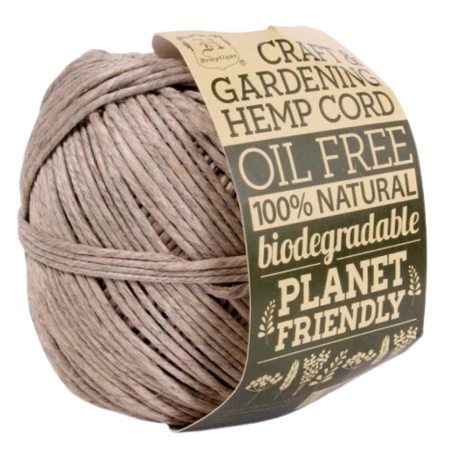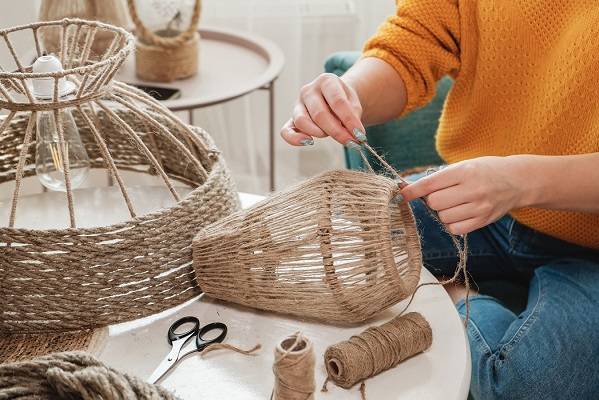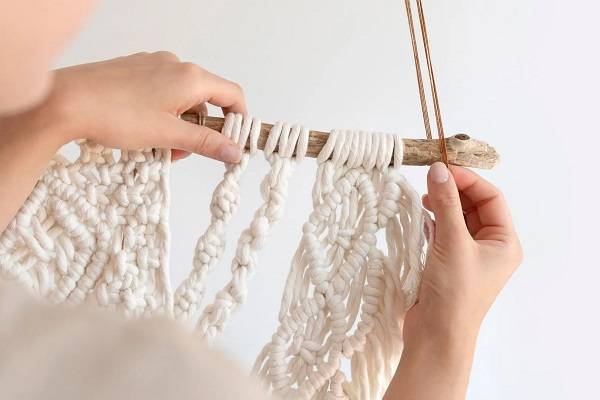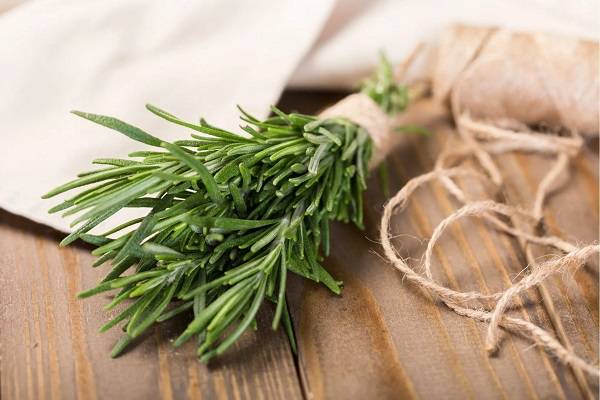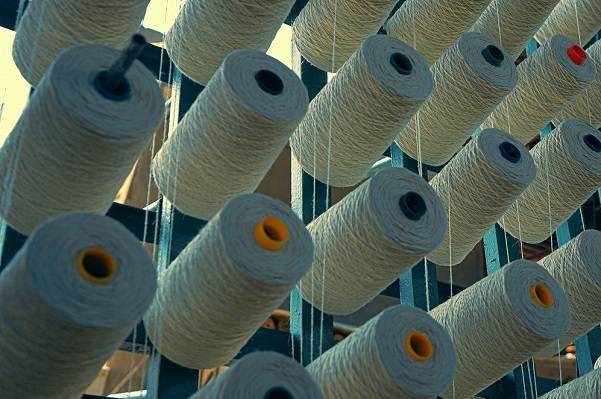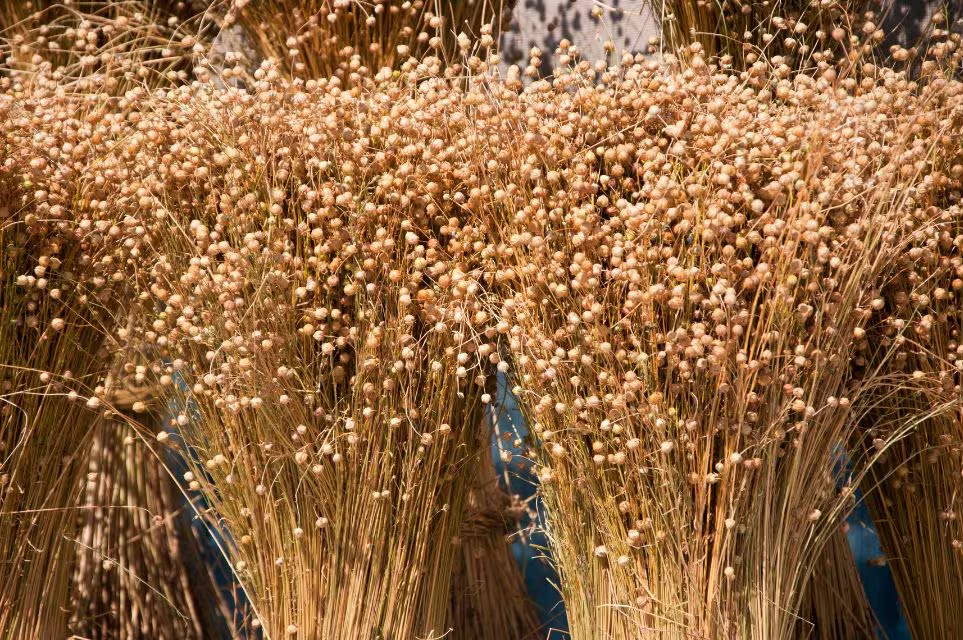Natural materials, like cotton, jute, or hemp, are biodegradable and if 100% natural they can be composted and recycled, others take a little effort. Nylon, for example, must be sent to a specialist recycling center. It can also be re-purposed in creative crafts.
GARDEN STRING 101
Garden Twine: Your Ultimate Partner in Cultivating Success
Dive into the benefits of sustainable horticulture. Explore eco-friendly twine alternatives and enhance vitality and longevity of your plants.
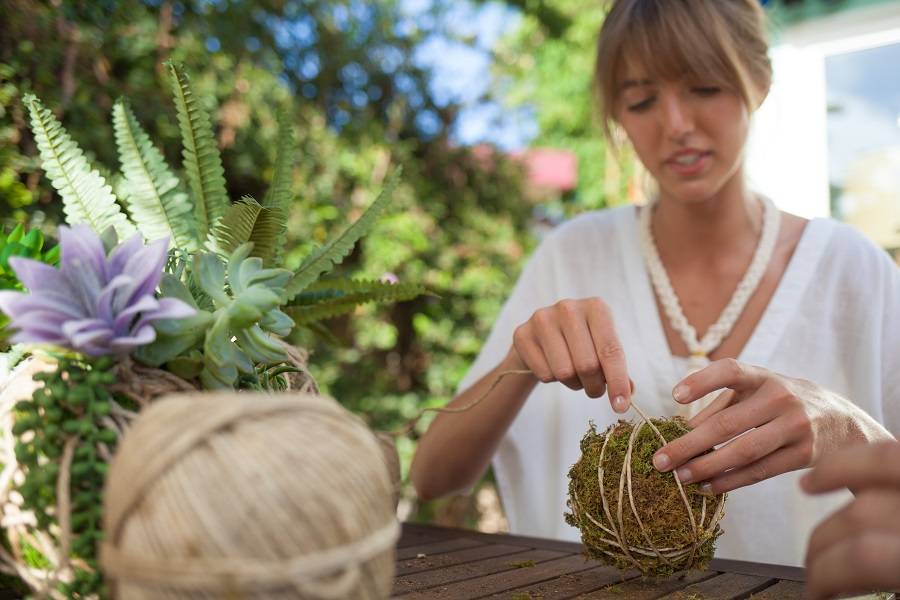
Innovation & Quality
Developing and supplying premium-quality, sustainably grown, consumer products
100% Natural
Organically Grown and Ethically Sourced
hemp and other natural fiber products
Shipping
We offer fast shipping
Your order out within 1-3 days
Wholesale
Visit our wholesale portal to register or login to your account
Garden twine is a must-have essential for any avid gardener, landscaper or anyone doing arts & crafts. From supporting squash, cucumbers, and vining tomatoes to tying up pole beans, twine is a multipurpose and necessary accessory in any garden. However, with so many varieties of garden strings available, it can be overwhelming to find exactly what you need. In this article, we will explore the history and practical usage, including the benefits of using hemp garden twine. We will also offer tips on choosing the best cord for your planting needs. Whether you’re a seasoned green thumb or just starting out on your green journey, you will find the helpful information you need about garden strings.
Buy 100% Natural Garden Twine at Hemptique
Hemptique provides high-quality, ethically sourced hemp gardening twine. Our string for plants is eco-friendly, oil-free and fully biodegradable. With its impressive strength and durability, it is perfect for use in garden, landscape, and crafting projects. This multifunctional string is a must-have in every garden and household. You can use it for various purposes, from tying up plants and making trellises to decorating the front yard. For retail visit our online shop. For wholesale inquiries do not hesitate to contact us at 760-602-4864. ext. 403 and 405, or follow this link to apply for a wholesale account and buy garden twine in bulk.
THE ORIGINS
The use of plant string dates to ancient times, when it was made from natural fibers, such as hemp, sisal, or flax. It is believed that the first cord was probably made by twisting long plant fibers together to make a strong rope.
The use of twine became more popular in the Middle Ages when it was extensively used to tie up hay and other crops in bundles. With rising industrialization, new materials such as synthetic fibers were introduced.
GARDEN TWINE TYPES
Today, you can choose from many different types of twines available to suit a wide range of purposes. Some of the most popular choices are natural fibers such as hemp, jute, and sisal since they offer strength and durability on top of being eco-friendly.
Synthetic fibers, such as nylon and polypropylene, are also frequently used, as they are strong and have increased resistance to water.
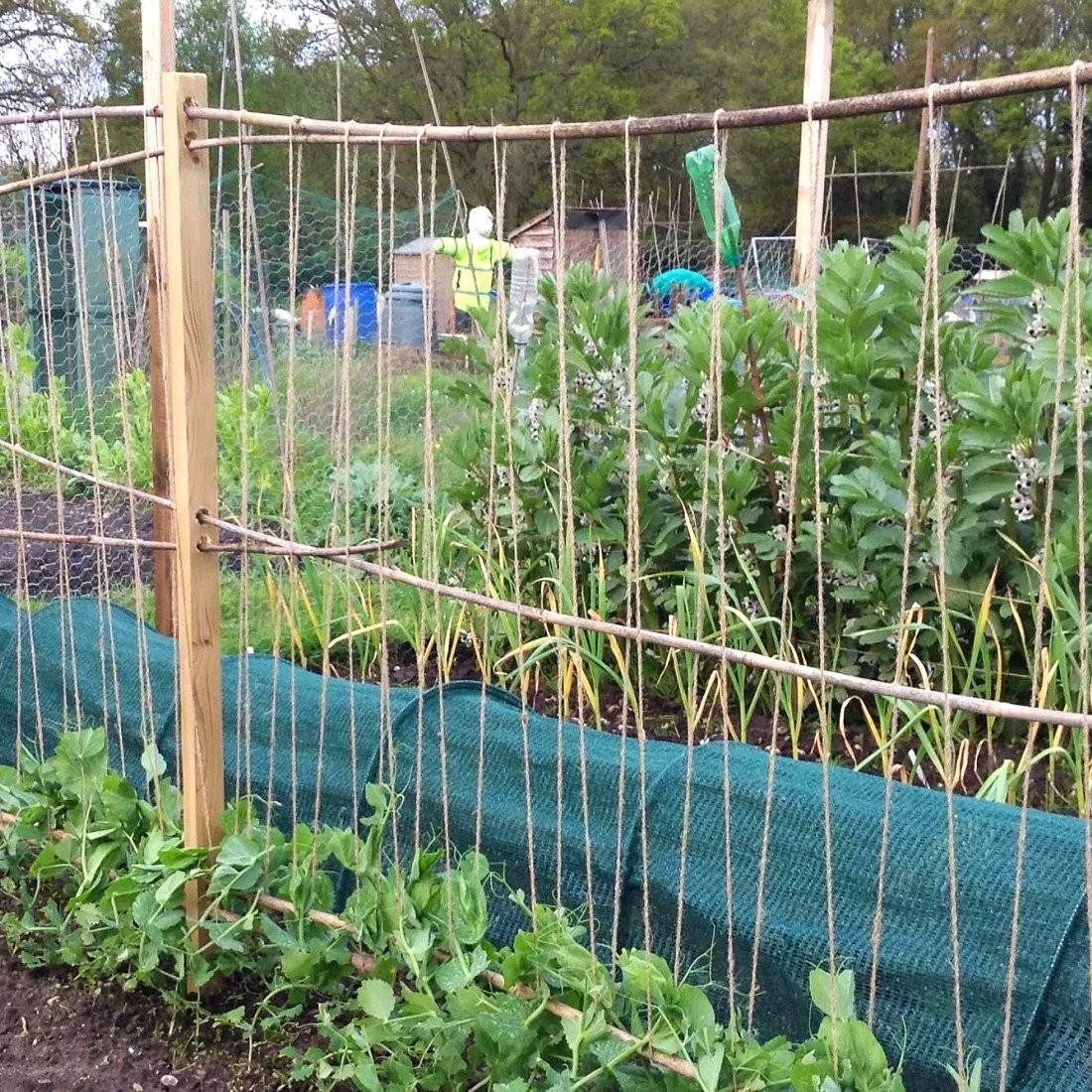
HOW TO CHOOSE YOUR PERFECT GARDEN TWINE
Determining the right cord for your specific needs depends on miscellaneous factors like strength, durability, and thickness called for the task at hand. Do not forget the environmental impact. Natural fibers like hemp are an eco-friendly choice since it is sustainable and biodegradable. Hemp twine is strong, durable, resistant to mold and mildew, making it an excellent choice for gardening, landscaping, and outdoor use in general. In the end, the best garden twine for you will depend on what you will use it for, but choosing a high-quality earth-friendly option like hemp will get the job well done while also reducing your carbon footprint.
Strength
The strength of the twine is one of major properties you will contemplate. Think of the weight that the twine will have to hold. Some strings can hold heavy loads; thus, they are more fitted for heavier tasks. The strongest types of materials for these kinds of tasks are nylon, or hemp, which stands out by its strength among eco-friendly alternatives.
Water resistance
If you want to use cord outdoors or in wet conditions, it is important to opt for water-resistant option. Some natural materials like hemp and jute are naturally water resistant, while others like cotton must be treated to achieve water resistance.
Color
While cord color may not be as significant as other elements, it is still worth considering. Colored twine can add a decorative touch to crafts projects. For a timeless, minimalist classic look, use natural hemp twine.
Material
One of the choices you will have to make when buying trellis twine is whether to use natural or synthetic materials. Twine can be made from natural materials like hemp, cotton, sisal, flax, and synthetic materials like nylon, acrylic, polypropylene. Each material has its own unique properties.
The main difference is that natural materials are softer but are not polluting your soil and the environment. If you are planning to hang plants, you should pick a strong coated synthetic type, or the strongest 100% natural hemp to make sure it will last. For attaching plants to stakes, you can choose any material. Make sure you are handling the plant gently. It is recommended to go with natural fibers as they will be significantly softer on tender plants like tomatoes, pepper, cucumbers, squash, and beans.
The main difference is that natural materials are softer but are not polluting your soil and the environment. If you are planning to hang plants, you should pick a strong coated synthetic type, or the strongest 100% natural hemp to make sure it will last. For attaching plants to stakes, you can choose any material. Make sure you are handling the plant gently. It is recommended to go with natural fibers as they will be significantly softer on tender plants like tomatoes, pepper, cucumbers, squash, and beans.
Diameter
The diameter can range from very thin to thick. The intended use will determine the thickness you need. Thinner twine is better for delicate tasks like tying up gentle flowers and plants. Heavier tasks like securing an apple tree trunk to a post require a stronger and thicker cord than tying up a bundle of roses.
Length
The length of cord you need will depend on what you want to use it for. Think of the length of the area you want to cover and whether you need just one long piece or several shorter pieces to finish the job. Bearing in mind how versatile the string is, getting an extra length will most certainly be put into use at some point. It will not go to waste. A completely compostable option, like hemp, is a good idea in these instances.
GARDEN TWINE VERSATILE USAGE
Garden twine is a versatile and essential item in many different settings, from gardening to landscaping and decorating. In gardening, you can use it for a variety of purposes, such as tying up plants to stakes, making a support structure for climbing plants, as well as securing netting. Whether you’re working in the garden, the kitchen, the garage or outside, twine can help you get the job done.
Supporting Plants
Garden twine is widely used for tying and supporting plants. Some plants, like beans or tomatoes, need support to grow upright and maximize growth. Peppers and eggplants, on the other hand, need support if their fruit becomes too heavy. This is where twine comes in. Use it to tie it around the plant and the supporting stake or trellis. This will prevent breaking the gentle stem and ensure you have a thriving lush garden. Make sure not to tie the plant too tight, as the plant’s stem will widen as it grows. Check your plant regularly to see if the knot needs to be loosened.
Training Vines
Trellis twine is a fantastic aid for training climbing plants, such as vines, sweet peas, or ivy. It helps them grow in a specific direction or desired pattern. By gently tying the stems to a trellis or support structure, you can guide the plant’s growth. You can also use it when pruning, to tie back branches you want to move out of the way while working. In the end, you will have a beautifully organized and stylish green space.
Securing Branches
You can use garden twine to secure loose or droop tree or shrub branches and prevent potential risks of breakage. Tying the branch to a sturdy support structure prevents snapping and bending and allows the plant to continue growing and stay healthy.
Bundling Vegetables
After you harvest vegetables like herbs, onions, garlic, or asparagus, you can use garden twine to bundle them together gently for easier handling and storage. These tidy bundles are convenient to transport or hang to dry.
Marking Rows
If you are planning to section off your garden, the best way to do it is with twine. It is an ideal material for marking rows in the garden. Stretch it between posts at the beginning and end of each row to establish clear borders that help you monitor different plants or sections.
DIY Trellis
Use your creativity to construct a simple trellis for your backyard or garden. By tying the twine horizontally between stakes, you can make a support structure that helps the growth of climbing plants, such as hydrangea, clematis, and roses. You can also make a vertical trellis for vegetables such as strawberries, summer squash or beans. It will add dynamics and an attractive visual element to your green space.
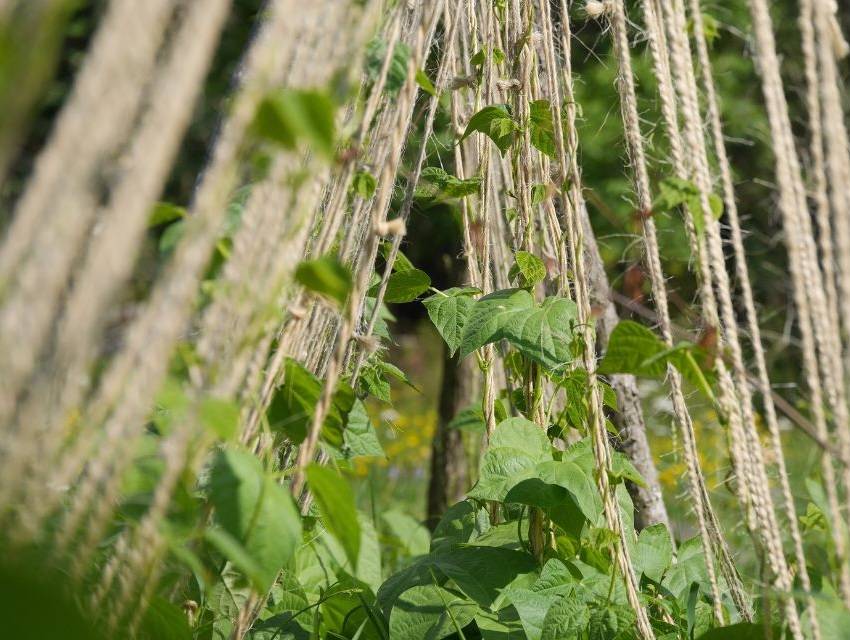
Securing Netting
If you must use netting to protect your plants from animals, pests, or weather conditions, you can use twine for tomatoes to secure netting in place. Tie the netting to stakes or posts to ensure it stays tight and keeps pests at bay.
Plant Hanger Crafts
Garden twine can also be used to create beautiful and practical plant hangers. For example, you can knot or braid the cord to make plant holders, adding a touch of uniqueness and creativity to your outdoor space.
Tree Wrapping
Tree wrapping is an effective way to protect your tree saplings and other delicate plants from cold weather, sun scalding, or other pests and animals like squirrels, rabbits, and deer. Simply wrap a string around tree trunks to make a barrier, insulating the sapling and preventing scratches and nibbling.
General Garden Tying
String for plants is multipurpose material that you can use to secure loose ends of plants, to tie up trellis wires or fencing, to bundle together garden tools. With garden twine you will be able to finish a range of tasks quickly and effectively.
WHAT MAKES HEMP GARDEN TWINE STAND OUT
Recommended Product
Material:100% hemp
Color: Natural
Thickness and length:
#100 Approx. 2.5mm thickness / 327 ft.
#170 Approx. 3mm thickness / 123 ft.
Color: Natural
Thickness and length:
#100 Approx. 2.5mm thickness / 327 ft.
#170 Approx. 3mm thickness / 123 ft.
Strength and Durability
As it is exceptionally strong and durable, hemp twine is a great choice for a wide range of applications. It has natural resistance to rot and mildew and can endure exposure to water and sunlight.
Eco-Friendliness
Hemp is a sustainable crop that requires no pesticides and enriches the soil while growing. Hemp twine is also biodegradable, and you can compost it at the end of the life cycle.
Versatility
Hemp twine can be used for a variety of applications from gardening and landscaping and crafts. Its remarkable strength and durability help you finish even heavy-duty tasks like securing plants and materials. In addition, its natural look and feel make it an attractive choice for arts and crafts projects.
Softness and Flexibility
Although it is quite strong, hemp is also soft and flexible and easy to work with and tie knots. With hemp you can easily finish the tasks that require lots of precision and attention to detail.
Resistance to Pests
Hemp fiber has natural compounds that repel pests like beetles or moths, which is a major feature especially for garden or outdoor use, as it will save you time in repelling the pests yourself.
Biodegradability
Hemp twine is biodegradable, which means it can break down naturally over time. You can safely put it in a compost pile, along with other decayed organic material. It is more environmentally friendly than nylon and takes a lot longer to decompose.
UV resistant
Hemp fiber is less likely to break down, weaken or fade if exposed to sunlight, as it is naturally resistant to UV light. You can safely use it outdoors or in areas with high levels of sun exposure, without worrying it will fade or deteriorate fast.
Conclusion
In conclusion, garden twine is a marvelous aid when taking on tasks that involve tying, bundling, or supporting objects in the garden. There are several types available on the market, however, hemp twine stands out as an excellent choice due to its many benefits. Not only is it strong, durable, and versatile, but it is also 100% natural, biodegradable and oil-free. It is perfect for garden and outdoor use due to its natural water resistance properties. You can even tackle heavier tasks as it is incredibly strong and durable. Having all these benefits in mind, choosing hemp twine for your next garden or landscape assignment seems like a smart and credible choice. Not only will you get your project done, but you can also feel great knowing that you have made a sustainable and eco-friendly choice.
Frequently Asked Questions
1. Can twine be recycled?
2. Can twine be used for food preparation?
Natural fiber twine, such as jute or hemp can be used for food preparation like trussing meats or making sachets of herbs and spices. However, it is of utmost importance to make sure the twine is clean and has not been previously used for purposes other than food preparation.
3. Do tomatoes need staking?
As tomato plants are very delicate and their stems often cannot hold the weight of their fruit, they need support to grow tall and strong. From early on, you need to support them by tying them up to posts. When you provide them with support from a young age, they will reward you with an abundance of delicious tomatoes.


